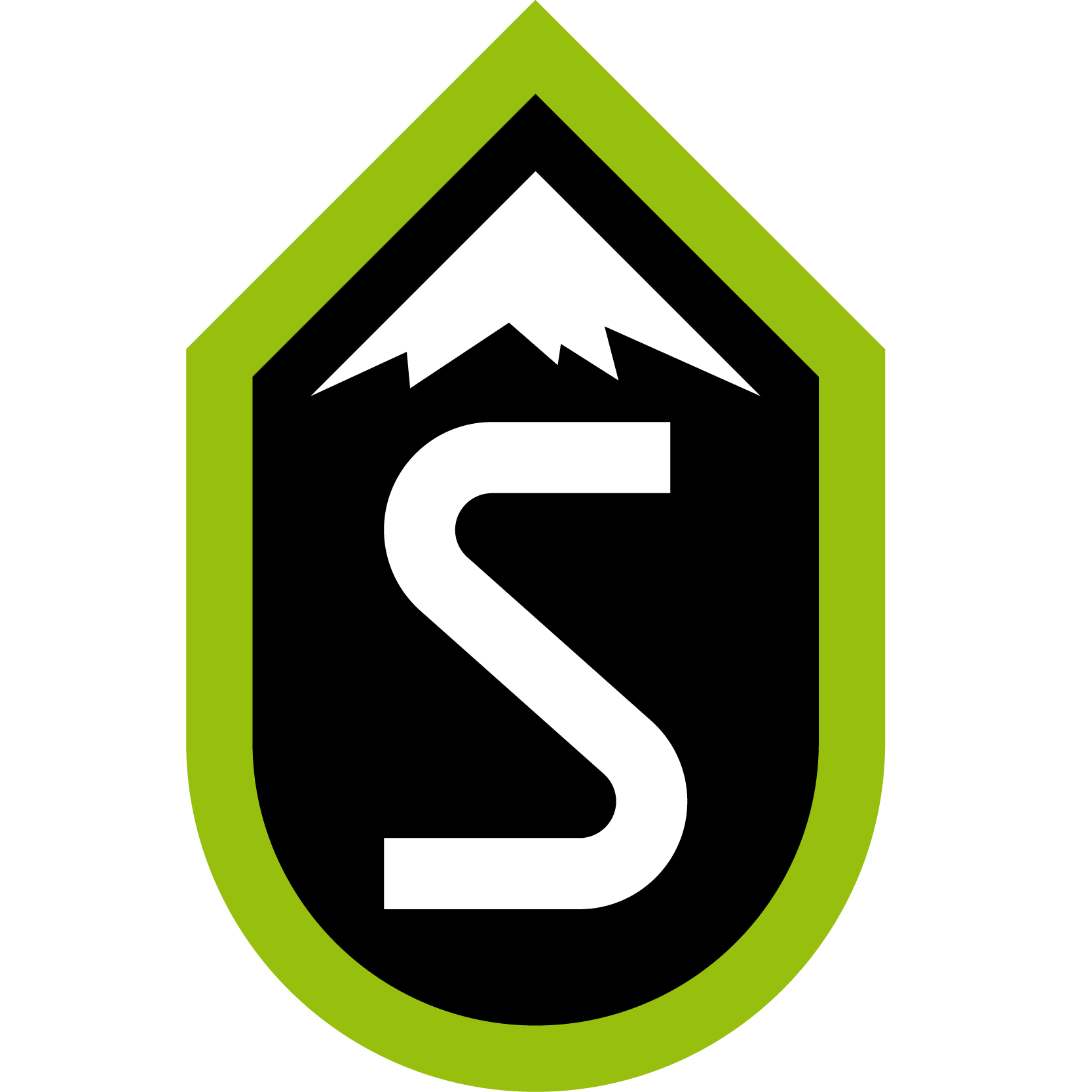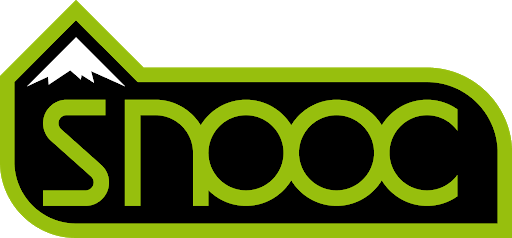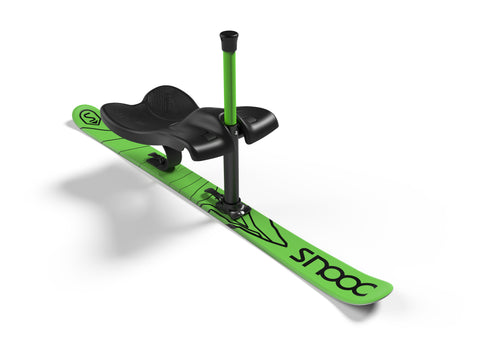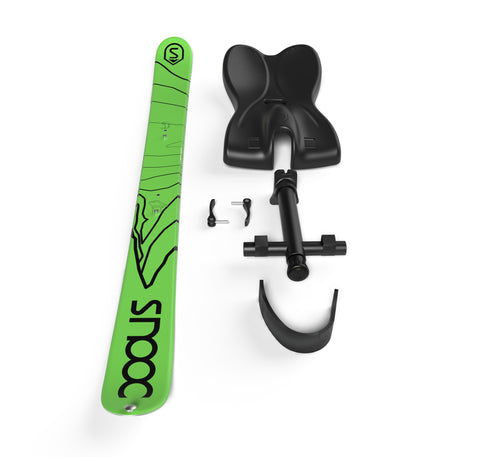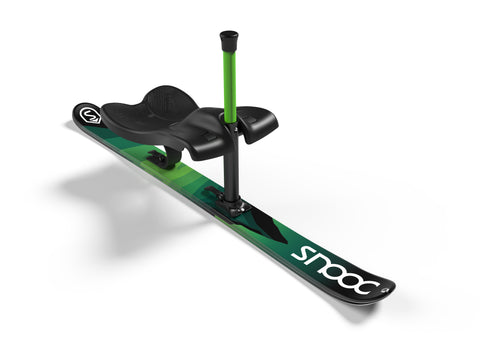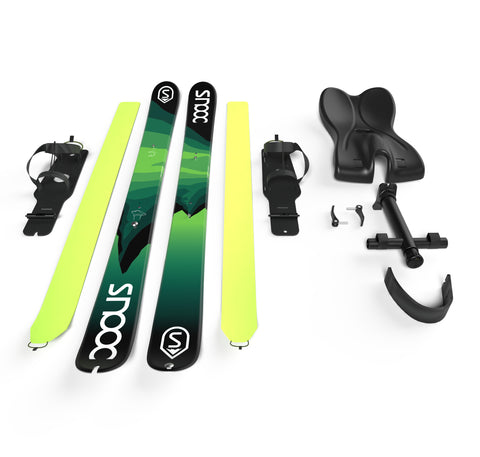Equipment for sledding
The specifics of sledding equipment are often overlooked. Let's dive into the particularities of this equipment, which is both simple and precise.
The equipment we recommend is valid for all tobogganing practices. It is also the ideal equipment for sledding SNOOC SNOOC on the slopes or while hiking.
What equipment for SNOOC sledding?
The seated position in SNOOC sledding brings us close to the ground and therefore close to the snow.
This position brings many advantages and to take full advantage of it, proper equipment is recommended.
The first element is related to snow projections.
If you're new to SNOOC and haven't watched the tutorials, you'll tend to keep your heel in the snow and your feet perpendicular to the snow.
This position tends to throw snow in the air... which you take in the face!
Shoes for sledding
The first thing to do is to equip yourself with shoes with a very flexible upper to be able to flatten your foot on the snow. Thus, the projections will be horizontal and will pass under the seat.
More details in the tutorial
Prefer waterproof shoes. There are inexpensive snow boots on the market that have a flexible fabric upper and a waterproof plastic fit.
Face protection while sledding
While waiting to fully control the angle of your foot on the snow to limit projections, you can compensate by equipping yourself with a ski mask. This will allow you to stay focused on your trajectories despite the snow in suspension.
The lower face is particularly sensitive to negative temperatures. To protect your cheeks, chins and nose from the cold and snow, equip yourself with a round shot which you will come to position on the bottom of your face up to the nose. Even though it is thin, it will protect you from flying snow and
will keep you warm.
Keeping your feet dry while sledding
In a seated position, the bottom of the pants tend to go up, exposing your ankle. Snow rushes into the pant leg opening and the shoe opening.
Therefore, to stay dry, relatively long pants equipped with gaiters plus a pair of high snow boots will prevent snow from entering.
If you are already equipped with pants and shoes, that these do not allow you to prevent the snow from entering, and that you do not wish to change them, you can equip yourself for a modest price of one pair of gaiters that will prevent snow from getting into your pants and your
shoes.
If you are equipped with leather shoes, remember once a year to waterproof your shoes with a waterproofing grease. It's day and night in terms of waterproofing.
Sit dry on a sled
As when you start snowboarding, it is common, especially in wet snow, to have wet buttocks. With a new waterproof pants, you will be dry
. But quickly, the membrane of the pants work, the welds are no longer as waterproof and the water-repellent treatment tends to age. In short, your pants quickly lose their waterproofness.
No worries, the superposition of two waterproof layers provides excellent sealing. The first layer receives the projections, the second layer prevents moisture from entering.
Just throw a pair of overtrousers over your pants and you'll be dry for long hours of practice. Cimalp make very qualitative pants but if your budget does not allow it, you will find other models more accessible.
Keeping Your Hands Warm While Sledding
You're close to the ground and like in surfing or snowboarding, putting your hand on the ground helps you find your balance.
As the snow is often colder than the air, in general, we recommend that you choose mittens rather than gloves. Mittens are warmer and better protect the fingers.
Depending on the terrain you practice, the snow will be more or less abrasive. Reinforcement in areas of wear on your gloves will be welcome. Personally, I made buffalo leather sleeves found in a recycling center... Guaranteed indestructible!
An American product exists to protect skate shoes
abrasion board
: the shoegoo available on the internet.
If you prefer gloves, there are soft and strong plastic gloves used by sailors or people who work in freezers.
You will find a model at Guy Cotten. The flared opening of the entrance to the gloves makes it necessary to take care to put the jacket on, not over the gloves. Otherwise, it's a snow funnel!
Protect your head while sledding
The helmet is essential to enjoy the slopes. Although close to the ground, in SNOOC, it is possible to take a speed close to that of skiers, i.e. 50 to 70 km/h. Like any activity where it is possible to gain speed, the helmet is essential.
Equipment is one thing, but know that nothing can replace your caution. From 20km/h it is possible to hurt yourself.
Choose your sled
How can we talk about the equipment for sledding if we are not talking about the sled itself!
You will find the important characteristics in our file toboggan buying guide guide d'achat de luge
After studying these characteristics, you will be able to evaluate the different sleds in our comparison of sleds..
If you want to directly find out why the SNOOC is the top of the sledges, a complete article is dedicated to the best sled of the moment meilleur luge du moment
Finally, if you want to go hiking, here is a comparatif des luges de randonnée
Tobogganing safely
Finally, our most important tips for enjoying the SNOOC sled for a long time:
- never overestimate your abilities,
- always keep a margin of safety,
- always be able to make a clean stop,
- never brake with your feet in SNOOC choose skid,
- keep control of your speed and trajectories in any situation.
These tips will allow you to take full advantage of the activity, not to scare skiers for whom the activity is unknown.
Your behavior depends on the sustainability of the activity on the slopes... and your health ;-)
